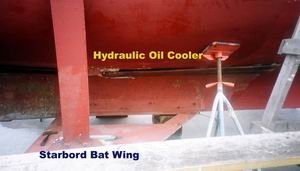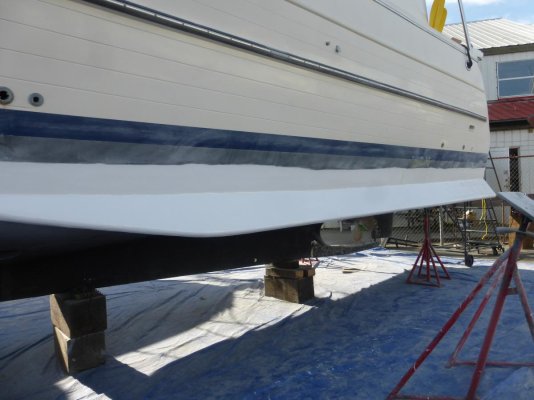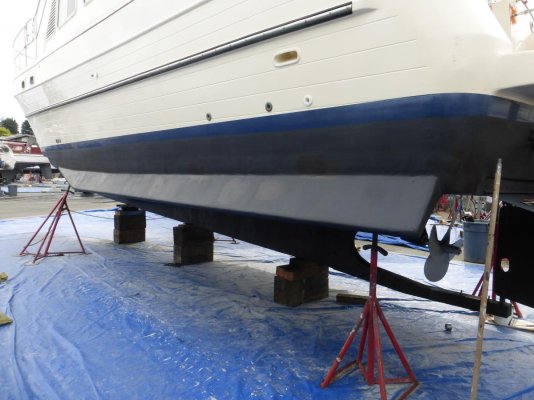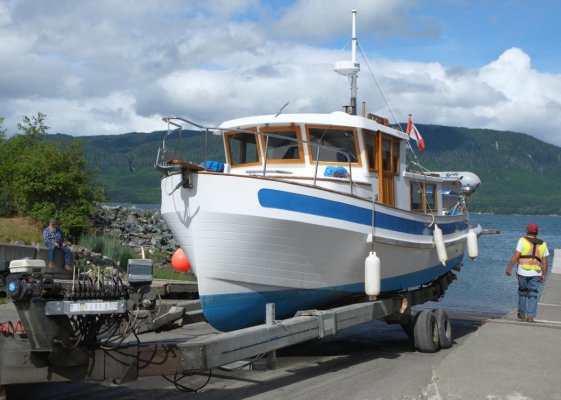If you look at the pictures I think you can see that the "wing" is approximately parallel to the keel. If anything this results in them being tipped up at the forward end when the boat is at rest, due to keel drag. But at sea the boat will be bobbing up and down, so sometimes they are tilted up, and sometimes tilted down. These are typically on >8 knot boats and generally fishermen report little or no increase in fuel consumption. There's going to be a bit, the surface drag has increased for sure, but frontal area is tiny. The batwings will slow heave a bit, as well as really reduce rolling because there's lots more flat surface to drag through the water (on the upward swinging side), and push through the water(on the downward swinging side).
Most say it's like having the paravanes out, without putting the paravanes out.
For fabrication and installation most shipyards in BC will know what to do. Chris Earl at Gronlund Boatworks in Richmond will do a good job. 604-244-7402.









